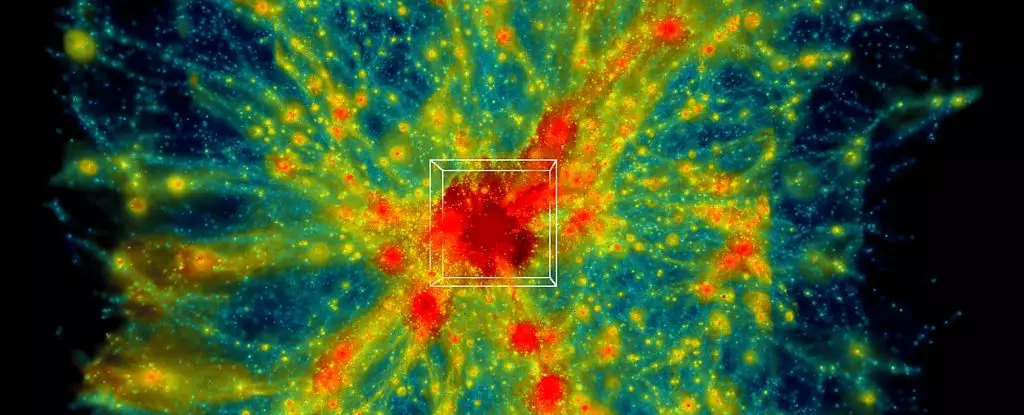A monumental stride in the realm of astrophysics has been achieved with the ExaSky project, facilitated by the Frontier supercomputer at Oak Ridge National Laboratory. In November 2024, a consortium of physicists successfully utilized 9,000 computing nodes to orchestrate the most expansive astrophysical simulation of the cosmos to date, encompassing a staggering volume of over 31 billion cubic megaparsecs. This groundbreaking simulation seeks to illuminate the evolution and the intricate physics governing our Universe, particularly the enigmatic characteristics of dark matter.
The critical notion here is the necessity of simulating two fundamental constituents of the Universe: dark matter, which interacts solely through gravitational forces, and conventional atomic matter. As the project’s lead physicist, Salman Habib of Argonne National Laboratory, notes, “To comprehend the Universe’s dynamics, we must account for both gravitational forces and various physical phenomena, including the behavior of hot gas and the formation processes of stars, black holes, and galaxies.” This multifaceted approach encapsulates what is known as cosmological hydrodynamics simulations.
The quest to unveil the Universe’s past involves examining celestial phenomena across billions of light-years, which simultaneously allows scientists to traverse through time. Employing simulations represents one of the most effective methodologies available to researchers. By inputting vast amounts of data, manipulating timeframes, and zooming in on specific regions, astrophysicists can construct a comprehensive narrative of cosmic evolution.
However, simulating the Universe’s complexities poses considerable challenges. The sheer scale of space and the intricate dynamics involved necessitate sophisticated mathematical models and formidable computational power. Despite these advancements, researchers often encounter the limitation of needing to simplify models by omitting numerous variables to streamline simulations. The earlier iterations of cosmic simulations, for instance, frequently had to rely on gravity-only approximations due to computational constraints.
The ExaSky project has emerged from years of arduous refinements in algorithms, mathematical frameworks, and the development of the Hardware/Hybrid Accelerated Cosmology Code. These enhancements have collectively enabled scientists to expand simulation scales, thus facilitating new insights into the cosmos. The remarkable capabilities of the Frontier supercomputer, which was lauded as the fastest supercomputer globally at the time, laid the foundation for this expansive endeavor.
One of the more striking outcomes of this project is the potential to correlate simulated outputs with real-world observational data derived from significant telescopes, such as the Rubin Observatory in Chile. This capacity to conduct large-scale simulations allows researchers to explore cosmic timelines spanning billions of years while assessing the expansive Universe’s continued evolution.
Astrophysicist Bronson Messer from Oak Ridge National Laboratory emphasizes the importance of the sheer scale of the simulation. He articulates, “The magnitude of the physical domain enables us to directly compare our simulations with modern observational surveys, marking a pivotal advancement facilitated by exascale computing.”
As scientists delve deeper into the intricacies of the Universe through these advanced simulations, there lies a promise of unprecedented discoveries. The results of the ExaSky project, while covering merely 0.001 percent of the cosmological landscape modeled, are expected to yield extraordinary findings that could reshape our understanding of fundamental cosmic principles.
The ExaSky simulation consortium represents a monumental step forward in celestial research. By blending cutting-edge technology with sophisticated theoretical frameworks, astrophysicists are now better equipped to explore the layered mysteries of the Universe. As we continue to refine our understanding of dark matter, cosmic expansion, and the formation of celestial bodies, the journey into the cosmos becomes not just a process of discovery, but an exploration of our existence within an ever-expanding tapestry of structure, time, and energy. The horizons of our knowledge are expanding, and with them, the potential to unveil the Universe’s deepest secrets remains limitless.


Leave a Reply